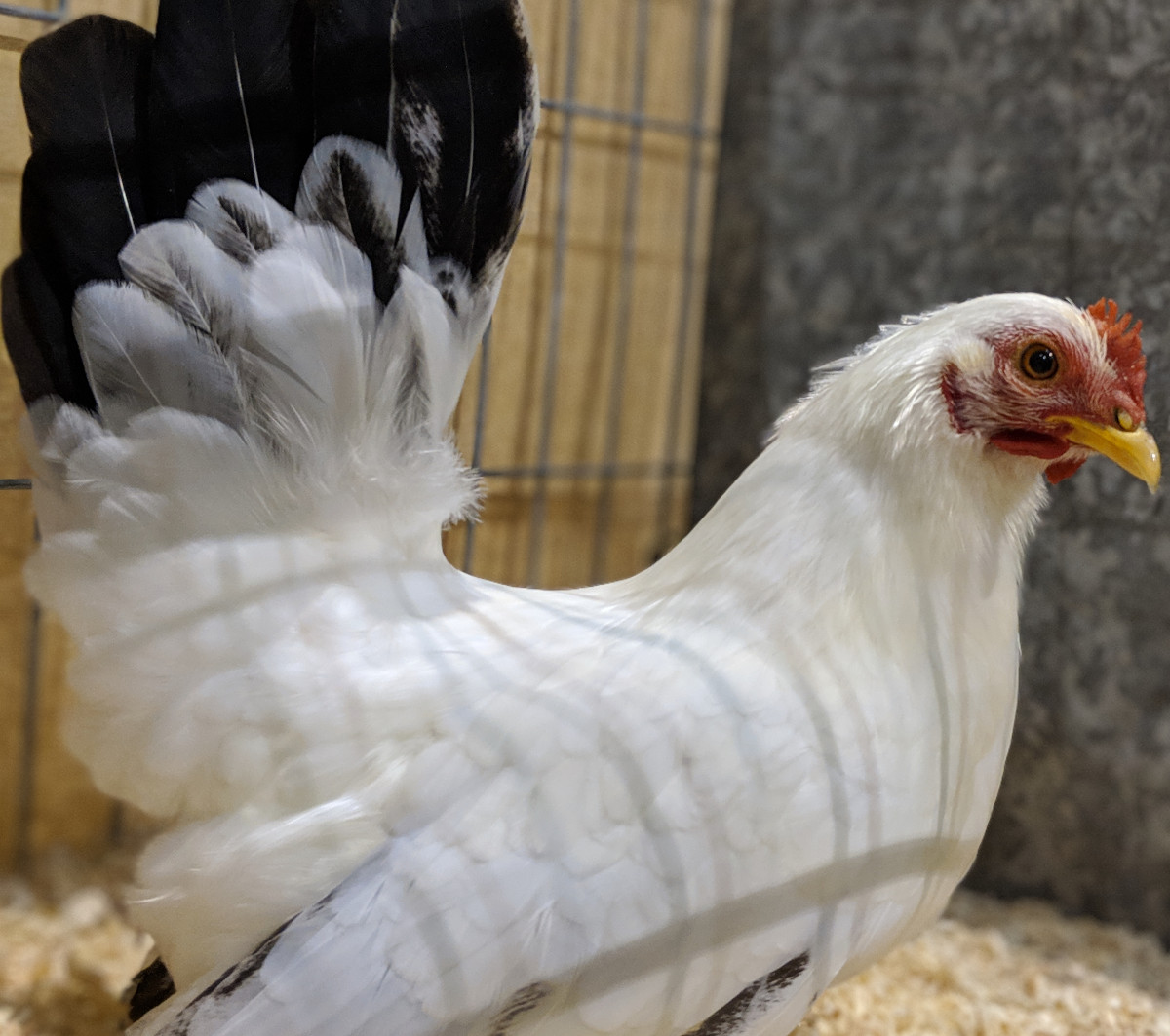
Japanese bantam breed standard.
Table of Contents
The Japanese bantam is classed as a "true bantam, soft feather, light breed" and is one of the only chickens to have a squirrel tail, a disqualification with most other breeds.
The Japanese bantam has a classic shape and low carriage with wingtips held toward the ground.
Below: Colours must be even and the feathers have a lustrous shine.
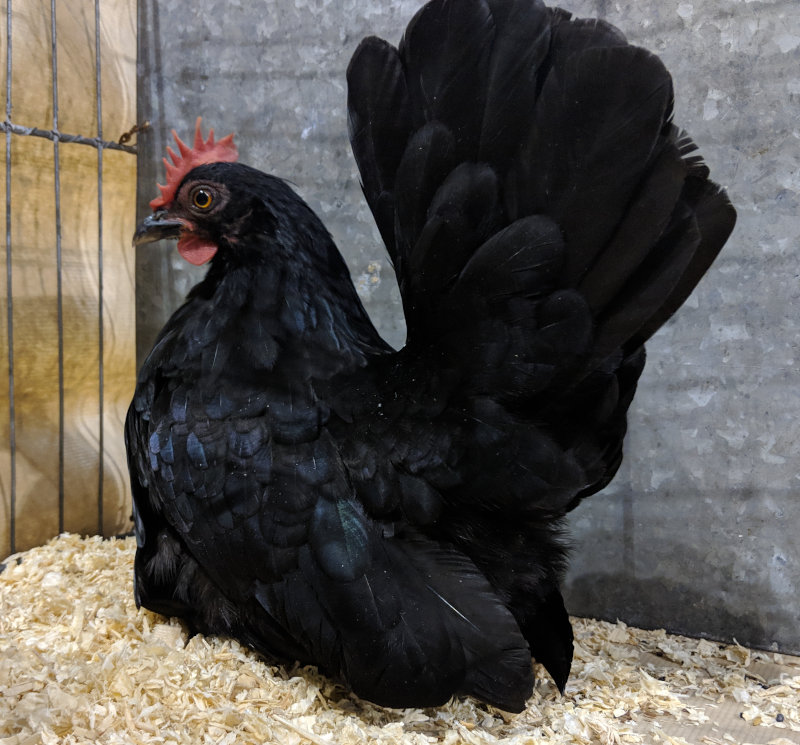
The large upright tail of the chicken should reach high above its head and the comb in the male is large for the size of the bird.
Combs should be as even as possible with the points upright and as evenly spaced.
Standard weights for Japanese bantams.
- Cock 26 oz.
- Hen 22 oz.
- Cockerel 22 oz.
- Pullet 20 oz.
Male:
Below: The ideal Japanese bantam cockerel.

- Head— Rather large and broad.
- Beak — Very strong, well curved.
- Eyes — Large.
- Comb — Single, large firm and straight on head ; evenly serrated, having
five distinct points. - Wattles and Ear-Lobes— Wattles, large, pendent. Ear-lobes, large,
smooth. - Neck — Rather short, curving prominently backward, with abundant
hackle flowing well over shoulders. - Back — Very short; saddle feathers, abundant.
- Breast — Very full, round, carried prominently forward.
- Body and Fluff — Body, rather short, deep and compact. Fluff, short.
- Wings — Large, long, points somewhat drooping.
- Tail — Very large, somewhat expanded, carried in so erect a position as
to almost come in contact with back of head; sickles, long, very upright,
very slightly curved. - Legs and Toes — Thighs, of medium size, short ; shanks, very short,
smooth. Toes, straight. Shanks and toes free from feathers and down.
Female:
Below: The Ideal hen from the standards of perfection.
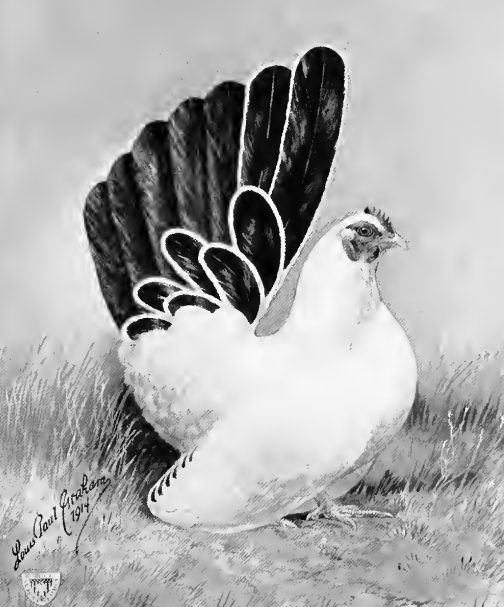
- Head — Rather large and broad.
- Beak — Strong, well curved.
- Eyes — Large.
- Comb — Single, large, firm and straight on head; evenly serrated, having
five distinct points. - Wattles and Ear-Lobes — Wattles, of medium size, well rounded. Ear-
lobes, of medium size, smooth. - Neck — Short, well curved.
- Back— Short.
- Breast — Full, round, prominent.
- Body and Fluff — Body, rather short, deep and compact. Fluff, short.
- Wings — Large, long, points somewhat drooping.
- Tail — Large, carried fairly upright.
- Legs and Toes— Thighs, of medium size, short ; shanks, very short,
smooth. Toes, straight. Shanks and toes free from feathers and down.
Disqualifications and faults:
Japanese bantams should not be shown if they have any of the following faults:
- Combs other than single,
- Shank colour other than yellow,
- Cocks weighing over 30 ounces,
- Hens weighing over 26 ounces
- Cockerels weighing over 26 ounces,
- Pullets weighing over 24 ounces
- Lack of squirrel tail,
- Any colour other than white in the white Japanese bantam,
- Any white or mealiness in the black feathers of the the black Japanese bantam.
Colours of the breed standard:
There are many colour varieties of the Japanese Bantam. The Entente Européenne lists forty-two, of which twenty-three are recognised.
Below: A frizzle feathered Japanese bantam cockerel.
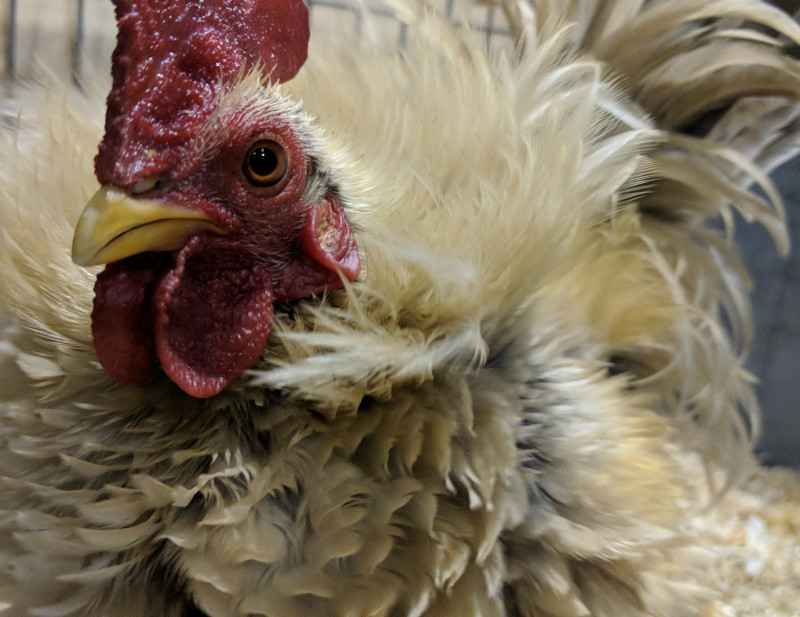
The standardised colours of the Japanese bantam including birchen grey, black, black mottled, black-tailed buff, black-tailed white, blue, blue mottled, blue-red, brown-red, buff Columbian, cuckoo, dark grey, golden duckwing, grey, lavender, Miller's grey, partridge, red, red mottled, silver-grey, tri-colour, wheaten and white.
The American Poultry Association lists nine colours.
Japanese bantams can also be hen feathered, frizzle-feathered and Silkie-feathered.
Below: A Silkie feathered Japanese bantam.

